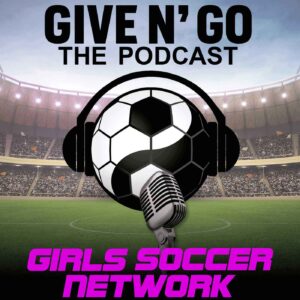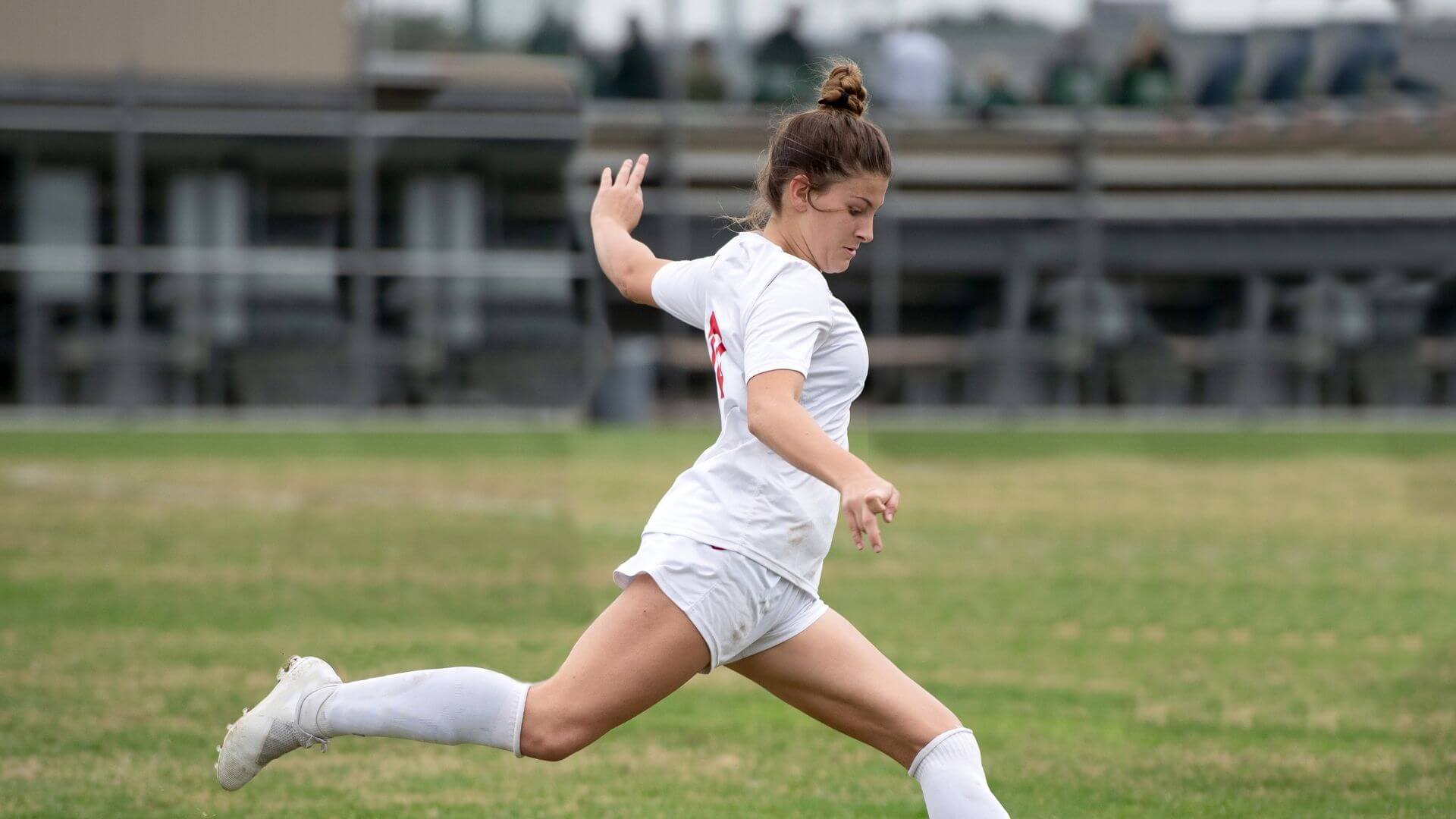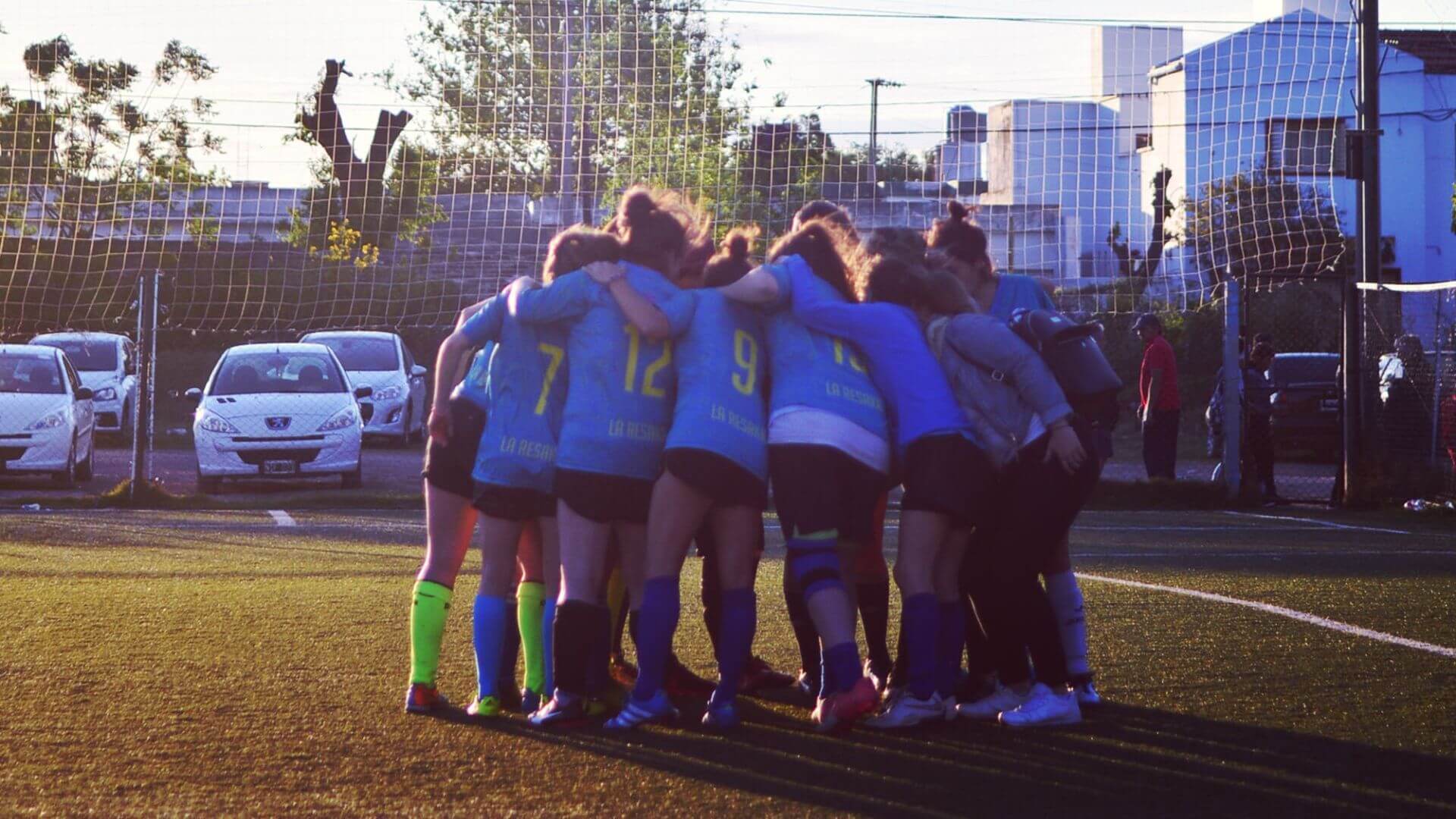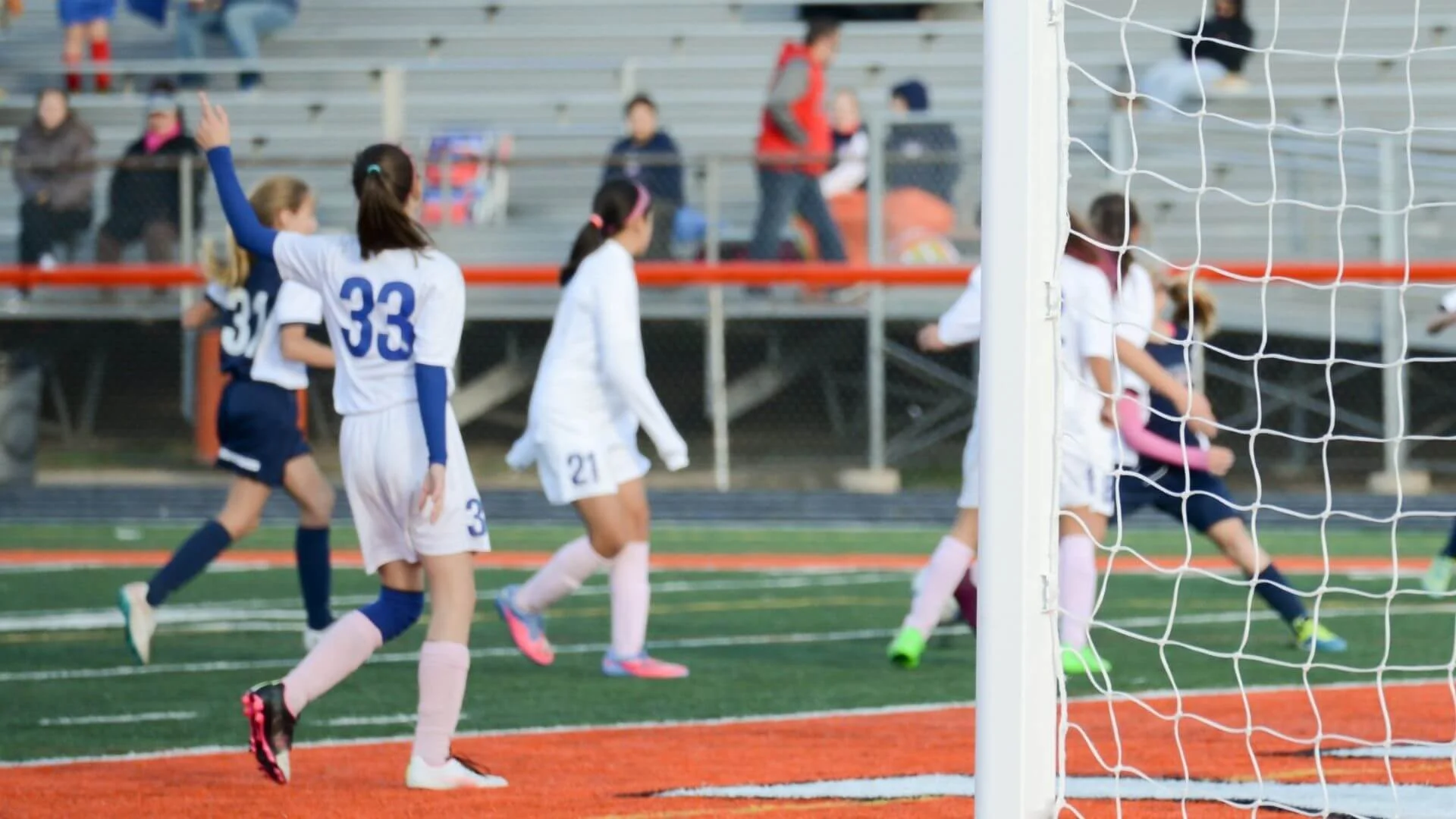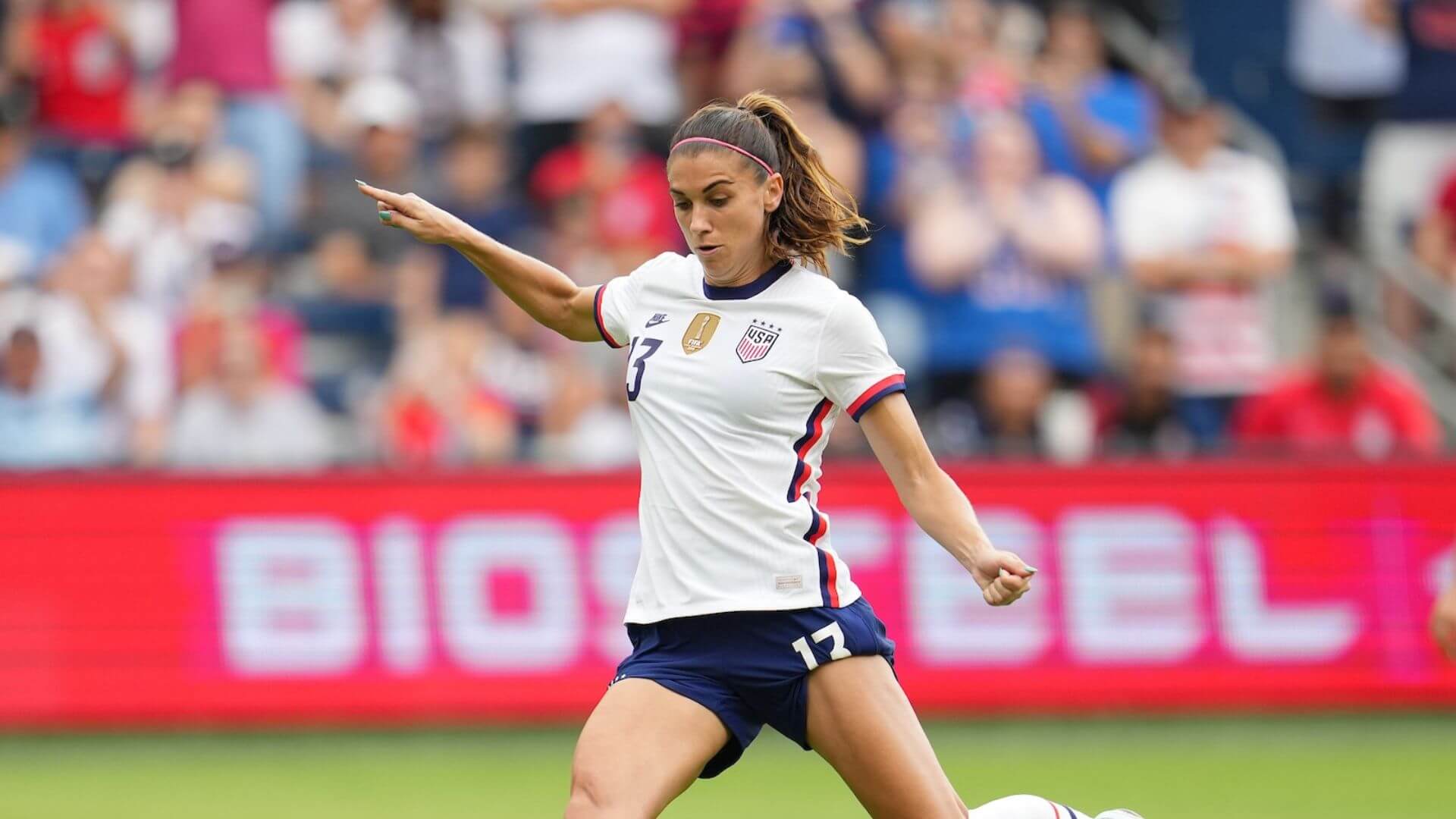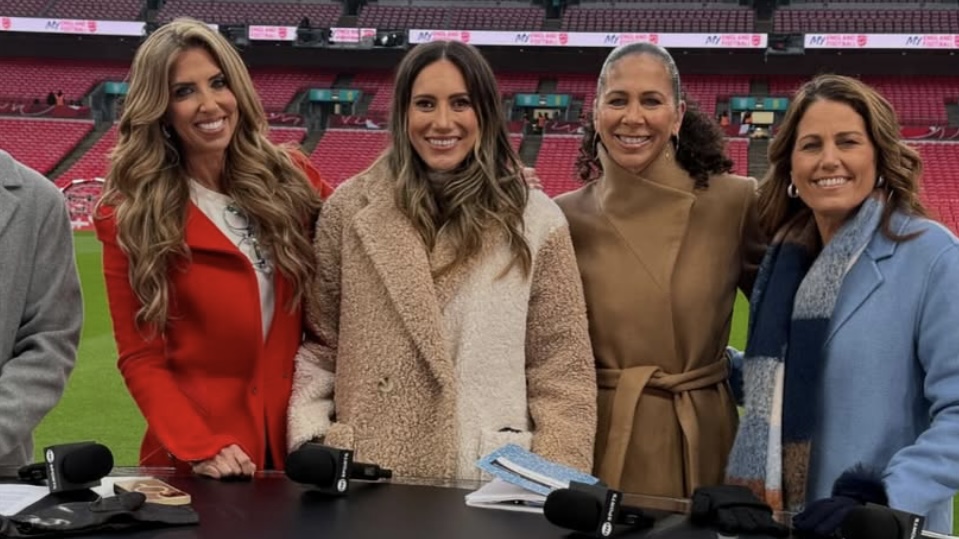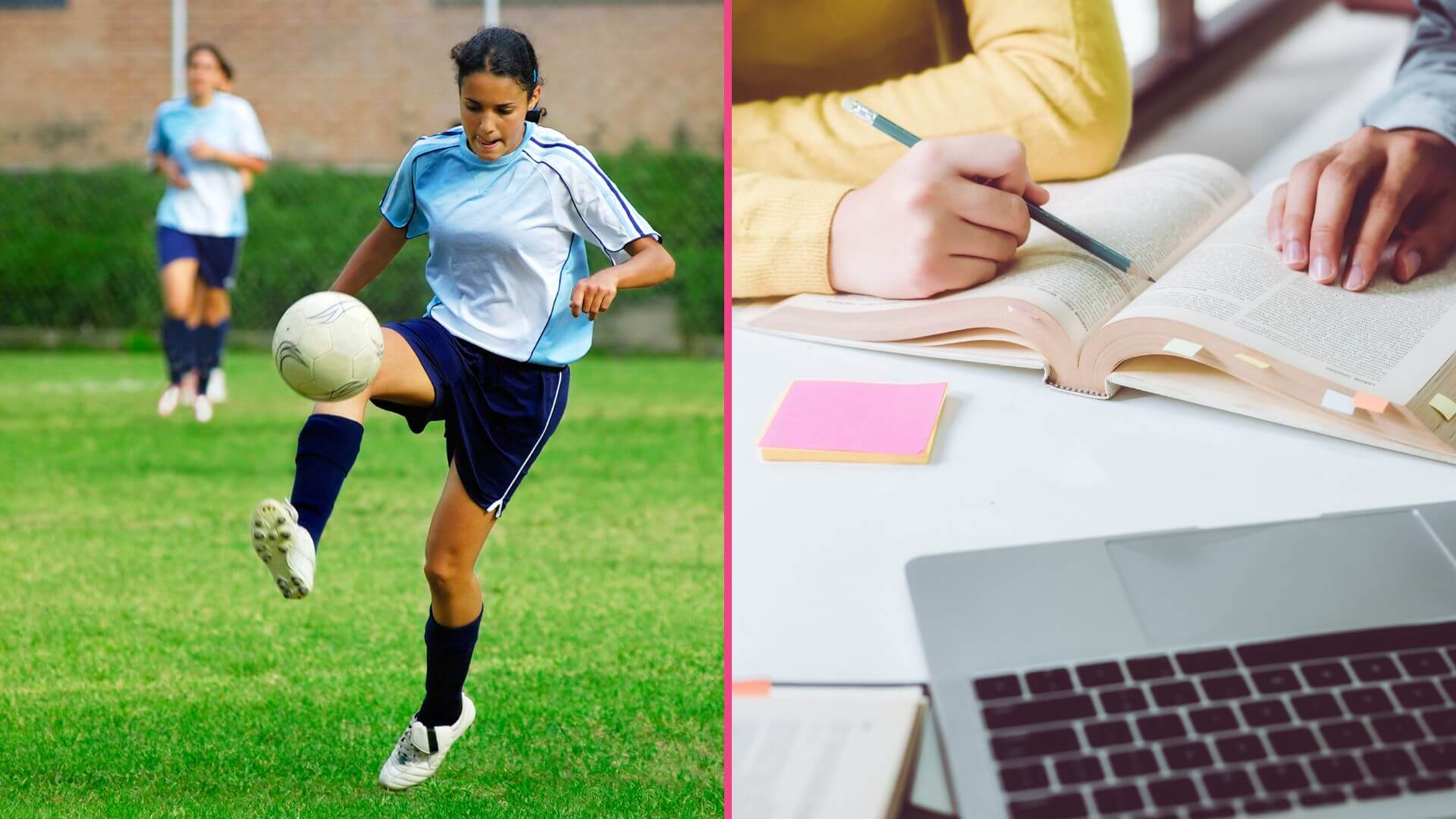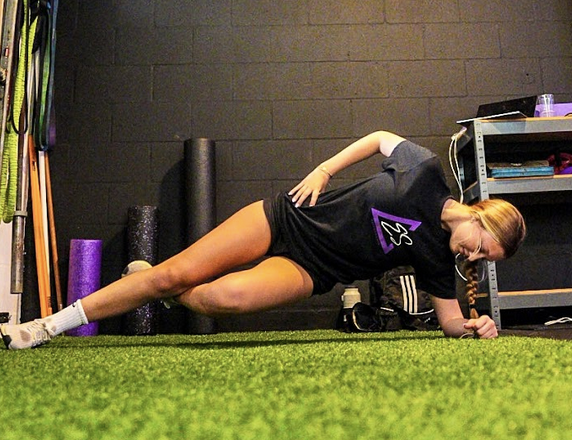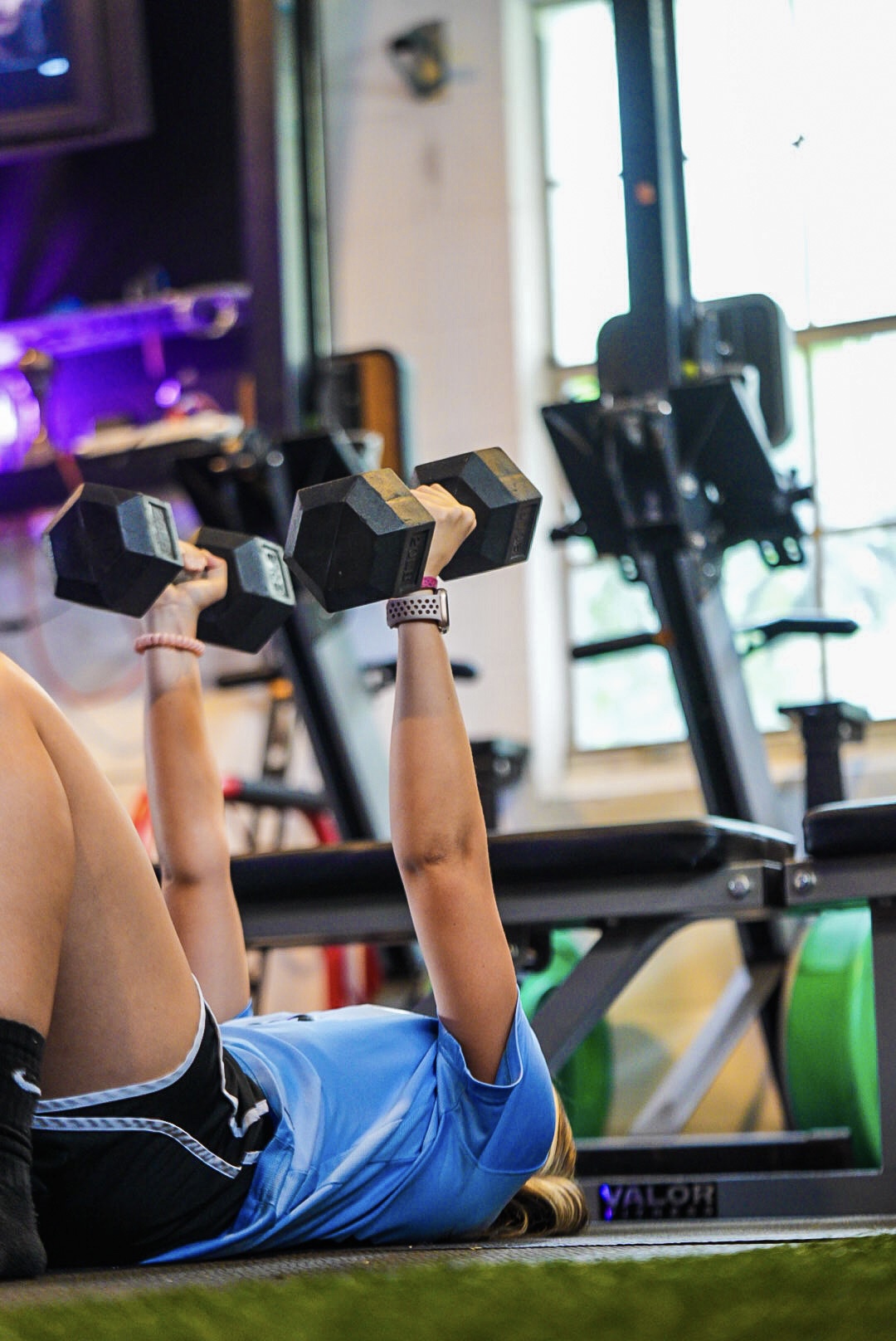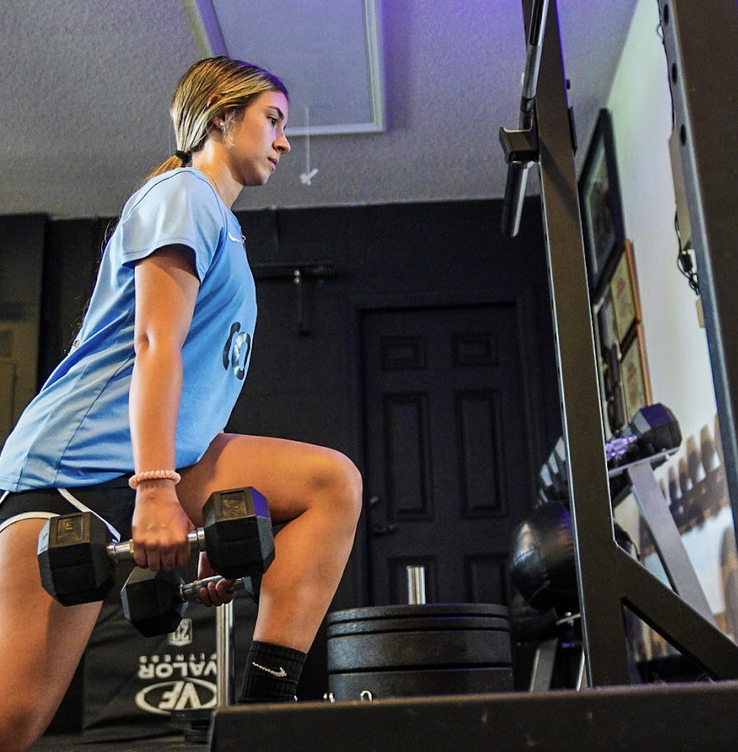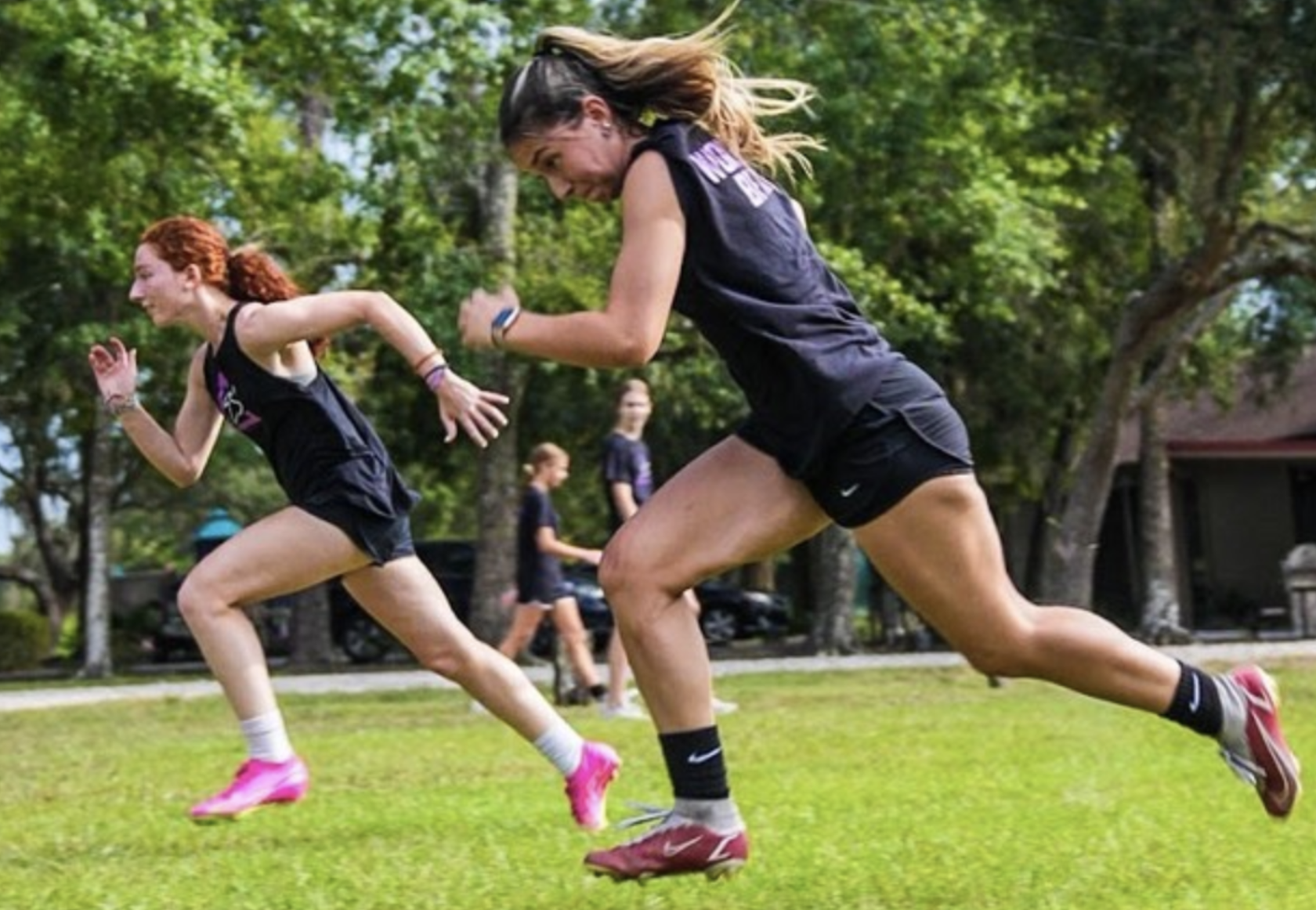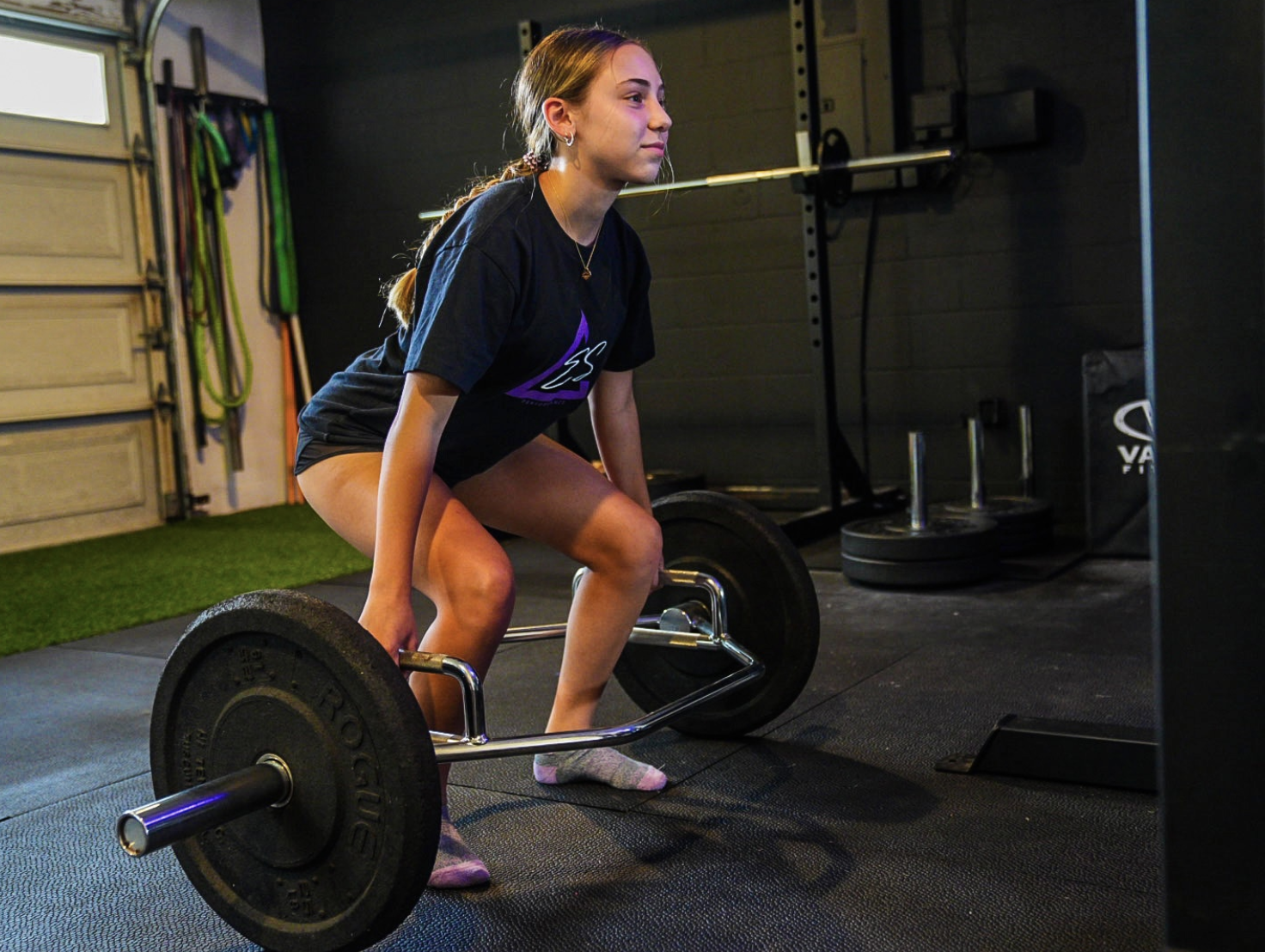Solving the ACL Injury Problem in Female Soccer Players
Beth Mead. Vivianne Miedema. Janine Beckie. Catarina Macario. Christen Press.
I’ll spare you the rest of the injured list because it’s downright tragic.
In the last 12 months, more than 20 professional women’s soccer players tore their ACLs.
This astronomical number has caused an uproar in the soccer community, and rightly so. With doctors, rehab specialists, chiropractors, team managers, sports scientists, dieticians, and performance coaches chiming into the discussion and giving their take on what is to blame.
“It’s the lack of resources!”
Or “it’s a lack of research in female sports!”
“It’s because of female anatomy,” or “It’s knee valgus mechanics!”
So, then what is it? Who do we listen to? Do we reduce the cause of these injuries down to a single factor and point the blame at one thing? Do we blame the lack of resources or lack of research? Or do we blame females for being female?
This isn’t productive, and here’s why.
Injury Risk is Multi-Factoral
We can’t point the finger at one single cause. This is narrow-minded and not scientific. We need more in-depth analysis.
Lack of resources, for example, is the last thing we should be blaming. We are talking about the best teams in the world, from Arsenal to the U.S. National Team, who have access to a full sports science and performance staff as well as the best GPS, rehab, and recovery technology in the game.
Female soccer players can achieve vibrant health and high performance with minimal resources. All they need is a power block to progressively load over time, or a field to run sprints and be exposed to high-speed running. All they need is a solid program in place, done consistently.
We need to stop playing the blame game and do something. You know, empower girls once and for all.
Let’s dive into actionable steps because I’m all for radical action, especially at the individual level.
1. Physical Literacy
Let’s backtrack. Everyone wants to blame everything that is happening now, but how are young female soccer players being brought up in the sport system? With specialization and year-round leagues, camps, and showcases at their apex, let’s think for a second: is this good for the health of the player? Or are they being robbed of building a sturdy athletic foundation in their most plastic years of growth?
Physical literacy means having a broad range of athletic skills, such as coordination, balance, stability, rhythm, and spatial awareness. It also means having strength in all muscle groups, not just the ones overused in soccer, such as the hip flexors and quadriceps. You’d be surprised how many kids can’t skip with coordination or perform a cartwheel. This means they struggle to express speed, which requires intermuscular coordination.
No one has thought to question what is going on at the youth level. No one has considered that overuse injuries manifest in adolescence and beyond when a youth soccer player has a childhood void of play and movement variety.
Twitter has been a whacky place for the knee injury debate. One day, a strength coach tweeted, “I’ve been getting a ton of teenage girls with knee injuries. What does everyone think the cause is?” Hundreds of people chimed in and said similar, ad nauseam causes yet again:
“Biomechanics!”
“Female anatomy!”
“Knee valgus!”
Then, Jeremy Frisch poked his way into the conversation and dropped the mic: “It’s everything that didn’t happen in their childhood.”
Jason Advedesian, Ph.D., who studies the impact of the brain on ACL injury, confirms this further. If an athlete is slow in their reaction time, knee instability is more likely to occur, and the torque on it increases. What better way than to improve an athlete’s reactivity than to have them grow up with free play and fun small-sided games?
Athletes learn how to become both fast movers and fast thinkers in this environment. Their reaction becomes sharp. No amount of over-coached snap downs and pseudo “agility” drills that are the furthest thing from agility will help female soccer players.
It’s the spontaneity we need to bring back. Neural pathways fire fast when the protective layer, the myelin sheath, is strong. Myelin becomes durable from play, problem-solving, and creative expression, but also from consuming A LOT of healthy fatty acids in childhood and throughout old age (more on the nutrition disaster in soccer players later in this article). Our young girls don’t need to be abused year-round by leagues, organized games, and practices. They aren’t robots. From ages 8-12 is when we need to optimize their motor skill development and expose them to new, fun environments that aren’t their primary sport.
Too many young girls play for over eight months out of the year, tallying up more competitive matches than the pros. For the growing and maturing female body, with all of its physical changes during the growth spurt, this becomes a dire situation. It’s a ticking time bomb before this manifests into a greater breakdown in the knee when they grow into adult athletes.
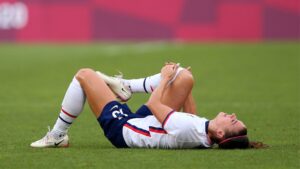
More girls need to grow into well-rounded athletes who have a broad foundation of athletic skills. They need to start young during the most plastic years of physical and cognitive growth.
Primary sport year-round ruins this, and overuse of a few muscle groups leads to bigger deficiencies, imbalances, and injuries later in life. For more information on a long-term athlete development model that looks out for the well-being and overall physical development of the athlete, check out the National Strength and Conditioning Association Position Statement paper HERE.
2. Year-round Strength
The research on the benefits of strength training for female athletes is overwhelming. And sure, there could be more studies on the female population, but we have enough to know that girls can’t go wrong getting strong.
Anyone who has time to peruse Google Scholar and sift through the medical journals will see that we actually have enough information on the benefits of strength training for mitigating injury to start taking action in a meaningful direction. ACL injuries can be reduced by over 60% if girls strength train consistently.
My healthiest female soccer players train strength year-round. They refuse to wither away in season and understand the importance of maintaining their muscular gains to handle the year-round sport load. When sport load is greater than tissue tolerance, that equals injury. The equation is simple and not rocket science. Muscles need to be able to handle stress. Wearing and tearing them with just games isn’t getting muscles stronger. It’s only breaking them down more. Eventually, the tissue needs a new stimulus, namely a loaded stimulus with weights, firing new muscle groups to adapt and get strong.
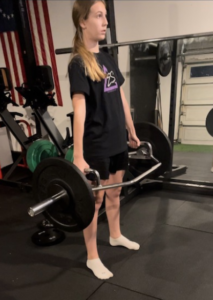
In my 12 years of coaching, my girls have grown to love the gym. We must encourage them to keep maintaining and building strength. Mind you, we’ve only had one ACL injury in 12 years, and it was a contact ACL. I think we’re onto something and have a darn good track record. We do year-round mobility, recovery, strength, and speed work. We implement periodization and have a plan.
The focus is on building single-leg strength, especially eccentric strength to handle braking forces, which is one of the most important and researched physical qualities female athletes need to reduce ACL risk. If you dare make the time to look at the overwhelming literature that has specifically studied females and strength training, you can read here, here, here, here, and HERE. There’s certainly more, but these are a great start.
And for those still blaming the female anatomy factor, a recent 2023 study, with a sample size of over 880 female athletes, concluded that there is no association between frontal plane hip and knee kinematics (knee valgus) for increased ACL injury risk. Hmm.
So this begs the question: are female biomechanics to blame, OR should general strength be a top priority so when athletes do get in “less than ideal mechanics,” they can handle the load better and still fire the right muscle groups that stabilize the knee? After all, sports movements are so spontaneous and done at such high velocities you’d be hard-pressed to find “perfect” knee mechanics.
The argument for strength training remains strong. It has for years.
Proper Strength Training
The only bilateral movements we do are Goblet Squats for the middle school girls as a starting point and Hex Bar Deadlifts for both middle and high school girls to load up the hamstrings.
Our training menu gravitates solely to single-leg strength movements: split squats, RFE split squats, single-leg RDLs, and pistol squats because injuries occur on one leg.
We don’t shy away from upper body strength because the body works as one big unit, with the upper body impacting lower body technical ability:
We don’t do sit-ups. Ever. That’s not core training. True core training encompasses all muscle groups that make up the lumbopelvic hip complex firing together, adductors, abductors, low back, and anterior core:
We also do single-leg deceleration work to better handle braking forces:
Then, our plyometrics progress to more intense, faster outputs:
We lift heavy, jump far, and jump high.
No cute little female athlete ACL “injury prevention” programs that only consist of balance drills and mini bands.
We load, we progress, and we truly build muscle strength. And we stay relentless with this the entire year. We focus on high performance because when we chase performance, injury reduction is a nice byproduct.
We also sprint year-round because it’s the best hamstring-strengthening movement a soccer player can do. Speed work bulletproofs the hamstrings, which is potent for good knee health. Fast athletes are robust athletes. Every speed drill, I tell my girls to be predators.
I guess you can say I’m lucky to be in the private sector because I have more autonomy over my performance programs. My athletes also make the most of the programming. I get 4x a week with them in a 2-3 month off-season. I get 1-2x a week with them in season. It’s concerning how underutilized the team performance coach is at some professional clubs (I’ve heard this from people in the highest positions in the premier league and at the national team levels). Pro clubs have the resources…they just don’t use them.
You’d be surprised to hear that some college and professional performance coaches work overtime for little pay to be nothing but glorified warm-up and stretching coaches. They’re given a meager 45 minutes a week with their athletes and not much time in the weight room. Minimal impact is to be had on the injury reduction front.
Worse yet, relationships aren’t built, and athlete buy-in with a strength program becomes tough. I repeat: it’s not a lack of resources…it’s a lack of performance coach utilization. And for the sake of anonymity, several of my colleagues at this level have confided in me they feel they aren’t used enough by the team coach. Injuries skyrocket as a result.
Why aren’t performance coaches used the best they can be?
Some team coaches and management fear in-season strength because they think the loading is too much, so soccer practice replaces weight room training.
Actually, the opposite is true: when players continue with strength training, they build durable muscle tissue for higher sport loads and increase their ability to recover faster. They can sustain the jam-packed game schedule. It’s a big mistake to discontinue strength training because even just a four-week cessation in a strength program will cause muscle to atrophy.
3. Load Management
We have all the GPS sensors in the world. More ECNL clubs are buying large quantities with the hopes their players strap them on and make use of the data. Unfortunately, most GPS sensors stay buried in the soccer bag, collecting dirt.
At the youth female soccer level, load management is not great; in fact, non-existent. Proper load management is looking at GPS data and allowing it to drive macro and micro-level periodization. A lot of coaches are bootstrapped, however, because how can you periodize and recover, then build athletes up again when the game schedule is out of control?
Leagues roll from August then to May the following year. But for most, they go until the end of June and into July. Then, practice begins again in July and August, so that gives the majority of girls in the ECNL and GA a meager two to three-week off-season. This is not enough time to rest an athlete, then implement a gradual speed, strength, and conditioning program with appropriate build-up to workload.
Look. The USL has good intent. ECNL has good intent. GA has good intent. These are amazing leagues that have increased the opportunity for girls to develop and serve as platforms to make it to the college and pro levels. But my question is: why the heck is no one blaming the packed game schedules, showcases, and tournaments?
When is there a true off-season for these young women to recover, build up a tolerance to load, undergo a new stimulus, get in the gym, and get a meaningful adaptation for true speed and strength development? A meager two to three-week break from soccer in July, ain’t it.
Then, it’s plowing through from August to July again, keeping in mind that a lot of these girls overlap with their middle and high school soccer teams. You can’t develop true speed if you’re not recovered. Your Central Nervous System will be fried. You can’t build strength sore. Your muscles will have lower outputs. You could train your biomechanic “perfectly,” but if a joint is constantly loaded and under-fatigued doing the soccer actions over and over again, will it be able to hold up?
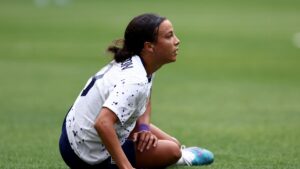
Shifting gears to the men’s game, they struggle with the same and have just as many injuries, but with hamstring strains. The other day, I had a phone call with a performance coach in the MLS who was just as frustrated about injuries. The men’s game is a total disaster on the hamstring strain front. I totally understood his frustration, and he brought up a point that made me think: “Erica, if these players don’t have a true off-season for a few months, then is the strength and speed I’m doing totally pointless?” Too similar to the women’s game, the men’s performance coaches are highly underutilized, and it’s nonstop soccer training.
Performance training is non-negotiable.
The best adaptations happen when an athlete is recovered. If my girls come to speed sessions sore, I don’t let them do the workout because it’s useless at that point. I send them home.
My freshest girls break speed records.
4. Nutrition, Recovery, Sleep, and the Female Menstrual Cycle
These go hand-in-hand. If one of these is not dialed in, it causes a chain reaction of problems in all body systems–skeletal, endocrine, immune, nervous, and cardiovascular.
If a female soccer player isn’t fueled enough, her hormones will be out of balance. And, if her hormones are out of balance, digestion suffers. If digestion suffers, sleep suffers. When sleep suffers, brain and muscle recovery suffer. When brain and muscle recovery suffer, that equals high injury risk. It’s a dangerous cycle, and most female athletes are painfully malnourished.
When they think they’re getting enough protein, they’re shocked when I tell them one egg is not enough. When they think they’re getting enough fatty acids, they’re shocked when I tell them to double their healthy fat intake of what they’re currently eating.
Nutrition is critical. It’s a disgrace how protein and omega-3 fatty acid-deficient female athletes are–the two macronutrients required for human survival and hormonal health in women. If people are so concerned about the female factor and the menstrual cycle as far as ACL injury risk, they’d give more tough love when it comes to nutrition.
Ever heard the phrase, “Well, they seemed so healthy! But how did they get sick or injured?” When girls think they’re eating “healthy,” they’re not. Again, most lack protein and healthy fats. When designing a meal plan for a female soccer player, they must have these five non-negotiables in every food:
- Least amount of inflammation
- Most nutrient dense
- Highest amount of proteins and fatty acids
- Most bioavailable
- One they enjoy
An example of a food that meets all five of these criteria is steak. It’s anti-inflammatory. Steak contains iron, zinc, vitamin A, magnesium, folate, vitamin B12, copper, calcium, potassium, and selenium. It is high in protein, with all essential amino acids. It’s high in long-chain omega-3 fatty acids. It’s bioavailable because the body actually absorbs meat’s nutrients. Basically, it’s the most bang for the buck, and you get the nourishment your body and hormones have been craving.
Iron is excellent for energy levels specific to the anemic female athlete. Magnesium is amazing for nervous system regulation. Carnitine and creatine deliver a powerful punch in muscle recovery and the ability to sustain high outputs.
A salad isn’t enough. One egg for breakfast isn’t enough. A yogurt and a banana isn’t enough. Double that or three times that protein amount. It’s magical when you have high-quality protein and the right amount at EVERY meal.
Has Sports Nutrition Failed Female Athletes?
Sadly, college cafeterias and college weight room “fueling” stations are the opposite of this list. They have high-sugar, processed, and inflammatory food options ready to grab. Minimal nutrient density. Low bioavailability. Sure, muscle milk and Gatorade bars are better than nothing, but we are selling our athletes short. Most sports nutrition plans wreak of anti-female hormonal health.
Their inflammatory nature can cause estrogen dominance, and low progesterone, which can lead to irregular periods, fatigue, poor muscle recovery, soft tissue injury, mood swings, headaches, brain fog, bloating, indigestion, cramps, acne, anxiety, and depression. And when all these happen is when sports performance suffers, and injury risk rises.
The governing bodies, corporations, and Big Food companies that are the stakeholders in college and professional sports cheapen everything for profit. Food quality goes down, nutrient density wanes, bioavailability is poor, and athletes suffer because they aren’t getting the nutrients they need for high performance.
It’s permeating into the youth female soccer space, too, and sets our young girls up for sugar addiction, high inflammatory diets, imbalanced hormones, poor muscle recovery, fluctuating energy and mood, autoimmune issues, and mental health issues.
Females need more protein for muscle building and recovery (over 20 grams a meal is a great start). They need fatty acids from whole sources (red meat, chicken, pork, eggs, butter, bacon, salmon, mackerel, tuna) to boost brain function, reduce cortisol levels, balance estrogen and progesterone and testosterone, improve heart health, and improve mental health.
It’s amazing what adding an extra few slices of bacon or having fatty meat every single day does for the brain, which is made up of over 60% fat. If the brain is mainly fat, it needs nourishment with fat. Females have feared high-fat diets because of the message that it makes you fat, but that couldn’t be further from the truth. Female hormonal harmony is only achieved through a high protein, healthy fatty acid meal plan.
Sleep
Now let’s talk about sleep. It’s crucial for the muscles to repair and recover because of the growth hormone that is produced in the bloodstream during deep sleep. Ever wake up feeling refreshed, clear, and energized for the day? That means you got enough deep sleep that is needed to replenish the body and mind. If a female athlete doesn’t get quality sleep, her cortisol levels rise, and her adrenals suffer. Again, another negative change reaction takes place because of this one mistake. Lack of sleep causes disrupted digestion, brain fog, a weakened immune system, and impaired muscle healing.
Stop Blaming Lack of Resources
Everything listed above is basic. And anyone can start today.
Play. Strength train. Sprint. Recover. Have off days. Have an off-season. Eat enough protein and fatty acids. Nourish the body. Balance hormones. And watch yourself THRIVE.
People can go on blaming the ACL injuries on the lack of resources in the women’s game all they want, but they’re focusing on the wrong things. People are trying to go against what the female needs and that is quality training, plenty of recovery, proper load management, muscle building, and nourishment with nutrient-dense animal-based foods and fatty acids. All of these support female hormones. My hope is all girls and women can experience how amazing it feels to do all of these things.
No amount of advanced technology, staffing, or thousands of dollars will offset a poorly written performance plan. I’ve seen some of the “best” facilities with Nordic boards, GPS sensors, and not even strength training their athletes consistently.
I’ve seen the top nutritionists suggesting sugar and refined carbs are good for female soccer players. Sugar and carbs are inflammatory. They destroy hormones, especially that week before the period when inflammation needs to be brought down. Sugar and processed carbs are the last thing a girl should be reaching for. Female athletes need proteins and fatty acids to keep inflammation at bay and to solve PMS symptoms once and for all. And when PMS goes away, they feel at their best for high performance and reduced injury. They have a new vibrant glow about them, and they become downright unstoppable.

The Way Forward
We need to invest in true physical development, and this starts at the grassroots level. Specialization is dumb. Stopping in-season strength training is even worse. Poor load management and blasting through the entire year with practices and games is the biggest disaster. Lack of nourishment destroys female athletes. Sugar and processed foods are the worst things for menstrual cycle health.
This investment doesn’t require billions. You don’t need much money to play a game of tag and build a variety of motor skills. You don’t need much to get a power block or set of dumbbells, which is enough to load and get stronger muscles.
My best remote athletes have home gyms with minimal equipment. They have grit, which costs the highest of all. I train out of my home gym in a garage with minimal equipment, too, and we’ve thrived because of everyone’s insatiable desire to become healthier female athletes. We discuss nutrition and recovery weekly. I get on the girls about their pathetic food choices. None of this has been expensive. I have all the resources I need. The most expensive thing in all of this is everyone’s commitment to year-round performance training, which many aren’t willing to pay the price.
A field to run sprints is free. Sleep is free. A walk in nature is free. Meat and eggs are cheaper, more nutrient-dense, and more satiating than a $12 açaí bowl. You don’t need much to be healthy.
Maybe you’re not convinced and still want to blame not having enough resources in the women’s game, but how productive is blaming and complaining? We have enough research at this point, overwhelming, in fact, on the amazing benefits of strength training, deceleration training, proper nutrition, load management, and recovery for women. We’ve come a long way on the research front, but when will people finally act on it and implement it consistently?
True female empowerment is focusing on the controllable.
Implementing a quality performance, load management, recovery, and nutrition program, whether this is at the level of the organization or the individual taking responsibility for their own health, is the way forward for girls soccer players.
For more research, get Erica’s THE STRONG FEMALE ATHLETE book
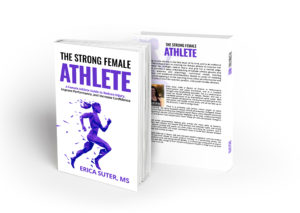
ABOUT THE AUTHOR

Erica Suter is a former college 3x All-American soccer player from Johns Hopkins University. She is giving back to the game and to female soccer players as a full-time performance coach. She holds a Master of Science in Exercise Science and has been helping girls with speed, agility, strength, and conditioning for over 12 years in the ECNL, GA, and NPL.
Her players have gone on to play college soccer at UNC, University of Maryland, Pittsburgh, Towson University, University of Charleston, MIT, Johns Hopkins, Carnegie Mellon, Rutgers, and more.
Follow Erica on Twitter: @fitsoccerqueen
Check out her podcast: The Soccer Queens Podcast
_
GIRLS SOCCER NETWORK: YOUR SOURCE FOR GIRLS SOCCER NEWS


